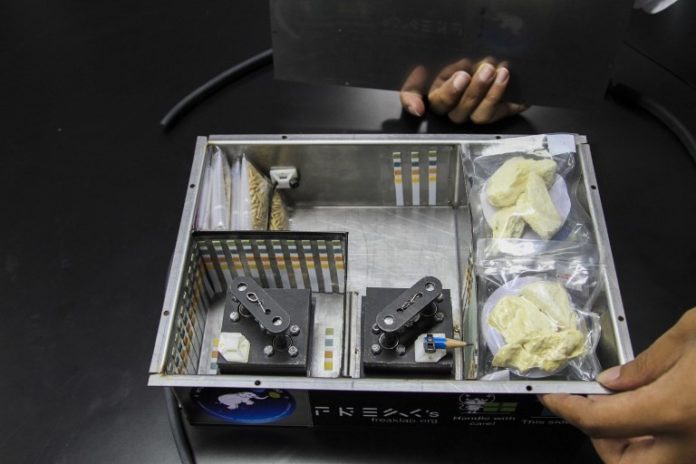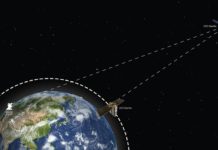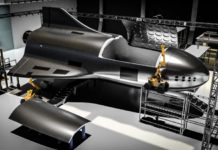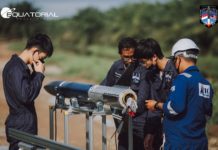Late last month, we reported on the launch of a 6kg payload from Thailand, on board the suborbital Blue Origin New Shepard. New Shepard flies to altitudes of 100 km providing approximately ten minutes flight duration, which provides great opportunities for companies and academics to conduct research.
This week, we will take a look at the payload in a little more detail and see why some of these Asian experiments are important for society on Earth and in space.
Space Durian
Durians can’t possibly be useful in space, you may think. But strip away the spiky husk and prepare it properly for spaceflight, and you’ve got one nutritious snack.
One of the payload slots was devoted to carrying 4 packets of baked, vacuum-sealed Monthong durian, which was a project overseen by Thailand’s Geo-Informatics and Space Technology Development Agency (GISTDA). Along with the durians, which were being flown to test the effects of weightlessness on taste and flavour on the fruit, there were grains of rice sent.
“In the future we want astronauts to be able to eat Thai food,” said a spokesperson for Thailand’s Geo-Informatics and Space Technology Development Agency (GISTDA). “We want to see whether there are any physical changes after it returns to earth — for example it might get smaller, or cracked.”
As more and more countries develop their space capabilities, more diverse foods will be considered for space flight, which can result in better and more varied food for astronauts, and eventually, for long-term colonies.
The sharing of international foods among the space industry opens up the possibilities of new foods for cultivation in space missions, which may normally be outside of a particular researcher’s gastronomical cultural radar.
China already has experimented with growing rice (and insects) for consumption on board the Chinese space station, Tiangong-2. NASA has long been interested in the nutritional value of insects for space colonies, and the Chinese experiments have doubtlessly been regarded with interest by NASA.
Bleeding Prevention Device
This was designed by Queen Sirikit National Institute of Child Health to prevent profuse bleeding in their patients here on Earth, and they wish to test the effects of microgravity exposure on the device provided by the test-flights parabolic trajectory.
Why would microgravity be important for an Earth-based device?
Profuse bleeding is an issue that space scientists are concerned with, as profuse bleeding is amplified in the “weightless” environment of space. Not only can the microgravity environment interfere with healing of the wound, but it can cause the kind of problems associated with fluids flying around in a spacecraft. So it’s a fairly important area of research, for up in space and down on Earth.
Freak Experiments
Futuristic Research in Enigmatic + Aesthetics Knowledge (FREAK Lab) is a STEAM-focused research group that converge arts, science, and technology over a range of projects. The lab was founded by a group of JSTP alumni and mentors at King Mongkut’s University of Technology Thonburi (KMUTT) in 2017. Their activities cover a range of different domains including space, and their space project has resulted in two experiments being assigned to the Thailand payload.
- FREAK Experiment 1 is a passive device for the study of three-dimensional distribution of gas under microgravity.
- FREAK Experiment 2 is a passive device for capturing the three-dimensional distribution and expression of micro-color particles under microgravity.
Those experiment names are fairly descriptive, but to give some context to the story, we spoke to Wares Chancharoen, the Director of the Passive Payload for FREAK Lab.
Firstly, the experiments are described as “passive”, due to the lack of power to the payload.
“Because there are no electric[s] in this flight, we have to design scientific experiments and their sensor without using electricity”. said Chancharoen.
He went on to describe the experiments.
“In FREAK Experiment 1…we want to study how gas moves in microgravity. The inside of the box consists of mechanical sensors (which automatically open in space without using electricity: pending patent), and pH strips around the box for measuring gas distribution”.
“The results of this experiment will be used in designing medicine in space — especially gas phase and/or food degradation in space”.
“For FREAK Experiment 2…we also want to study distribution in space, but of particles instead. The particles, namely micro-color particles, will be released and the pattern of distribution will be measured with double-coated paper”.
The results of this latter experiment could potentially be used in medicine, particularly in how drugs are dispersed through the body.
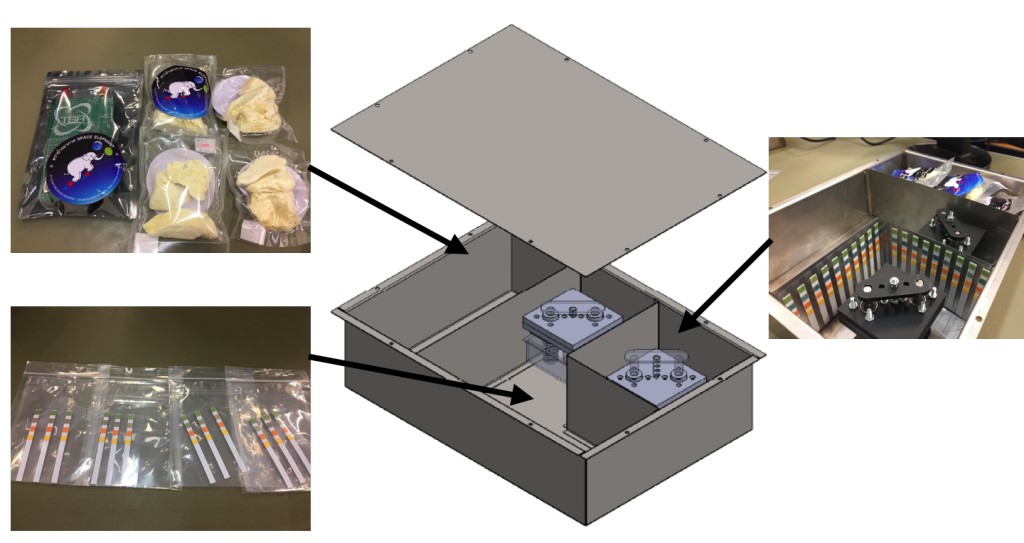
So there you have it: three of the experiments sent up on the sub-orbital rocket, all of which are focused on pushing knowledge of medicine and food, which are both fairly important for space travel.
In addition to the three that we looked at, mu Space Corp, the Thai space company that had conceived of the payload package, had sent their own textile materials that they hope to use in the design of space apparel in future.
Other payload components included a carbon nanotube experiment from Chulalongkorn University and a number of items from King Mongkut’s Institute of Technology Ladkrabang and National Astronomical Research Institute of Thailand (NARIT).

